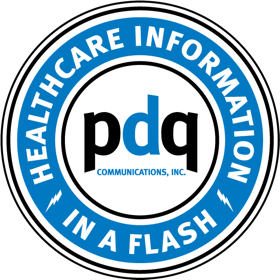The healthcare industry is rapidly evolving, and specialty pharmacies are playing a crucial role in...
Ophthalmology is changing, both in how ophthalmologists conduct business and the way they treat patients. As a result, marketers having trouble adapting to the medical and economic upheaval are in for a struggle.
There are some key trends you need to be aware of with regard to your marketing efforts directed at the decision makers in this sector moving forward. We examine several below.
The Need to Retain Patients
The days of seeing a patient on referral, treating, and then sending them elsewhere for their additional eye care needs are over. Patient retention has become hugely important. In fact, retaining patients for all of their future ophthalmic needs is now a major goal of ophthalmologists.
While a new patient may initially come to an ophthalmologist with a simple treatment issue, as they age, they will likely need procedures such as cataract surgery, glaucoma surgery, LASIK, and possibly, treatment for macular degeneration. This begs the question: Why let a young patient fall into the ‘one-and-done’ category, when you can treat them throughout the rest of their lives?
Since this patient retention trend is gaining steam, it is likely most ophthalmology practices will be looking to expand services to include dry eye and allergy testing/treatments, refractive surgery, and oculoplastics/blepharoplasties. This trend opens up new opportunities for marketing products that may otherwise not have been on most ophthalmologists’ radar.
"Developing and executing marketing strategies catering to the trends outlined here will be critical to achieving success in this ever-evolving industry."
Recession Looming?
Most economic experts foresee a recession on the horizon, with many forecasting either a mid-2020 or early 2021 economic slowdown. Expect this to cause further disruption, as ophthalmologists will potentially need to learn how to see more patients with fewer resources than they have, perhaps, at any other time. This will be particularly true for those at the beginning of their ophthalmology careers.
Mulling over the decision of adding a new piece of technology to the practice already required a careful balance between what can be afforded and the revenue this new piece of equipment will generate for their practice. It will become increasingly important to communicate the financial value such products will bring. Touting bells and whistles remains important, but illustrating how they will help the bottom line is just as imperative. Many of the newer pieces of ophthalmic equipment come with big price tags, so a swift return on investment is paramount.
Ophthalmologists today are carefully considering whether the cost of a device is outweighed by factors such as the time it will save them or reimbursements it will generate.
Service Reputation
This is another area weighed heavily in ophthalmology today. Advanced equipment is expensive, and sometimes breaks down. Be sure to tout your astounding response time for repairs. Providing a quick and accurate diagnosis, and an equally speedy and reliable solution that will result in uninterrupted, seamless ongoing business operation is crucial.
Promoting policies such as loaner units when repair work is necessary, additional training for new staffers, and the comforting knowledge that you’ll be there to help in a crisis is essential to fostering a great practice/vendor relationship. These exact vendor attributes are also at the top of ophthalmologists’ shopping lists.
In a space experiencing rapid technological advancements, they’re looking for a good working relationship with a vendor. Knowing they’ll need software upgrades, harbor integration concerns, experience hardware failures, and most certainly have staff training issues, they want to work with a vendor who they know will always be there in a pinch.
"The desire to see clearly isn't going to fade away any time soon."
Shifting Patient Demographics
According to recent data released by the U.S. Census Bureau, the 65-plus population is expected to outnumber children by 2030. Seniors will consume up to 10 times the eye care services of younger patients. This change in patient demographic for ophthalmologists will come with a new set of expectations including high-quality services at low prices, modern facilities, quick service, and one-stop cures. Unfortunately, this doesn’t exactly mesh with today’s ophthalmologists, who are trying to manage costs.
Another trend to take into consideration on the demographic front is the fact that in recent years the U.S. population has been growing at about the same pace as the number of ophthalmologists has been shrinking, according to an article titled “Change Is Inevitable: Prepare for a Challenging Future in Ophthalmology,” shared by specialty clinical information website Healio. It continues, that as the profession loses ophthalmologists from the workforce, the patient pool will continue to age and grow. As a result, you can expect the ophthalmic equipment market to become extremely competitive.
This will also usher in an era of younger ophthalmologists with changing social dynamics, as these millennials put greater value on balancing business and family life, more so than the generations preceding them, and generally, work fewer hours. Your marketing approach will need to change as well, forcing a long look at how this shift in demographics will alter your approach.
Seeing Is Believing
The desire to see clearly isn’t going to fade away any time soon. With approximately 654 million eyeballs in the United States, the unrelenting need for ophthalmology services will remain strong.
The demand for ophthalmic devices, specifically those designed for diagnostics, surgical, and vision correction purposes, is only going to increase as the population ages and life expectancy increases. Those manufacturers able to balance pushing important product features, with the long-term financial value their equipment/devices provide, will be the big winners.
Developing and executing marketing strategies catering to the trends outlined above will be critical to achieving success in this ever-evolving industry.








